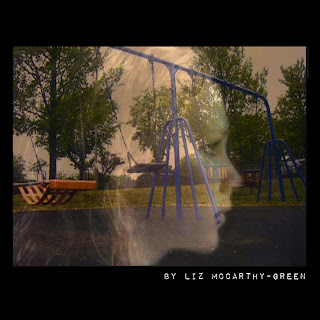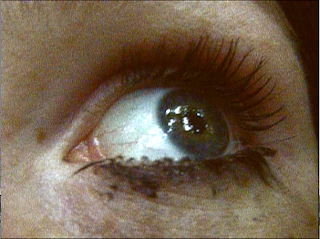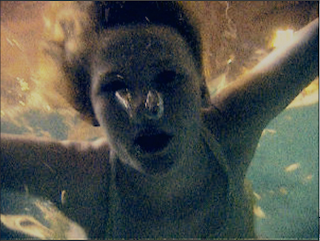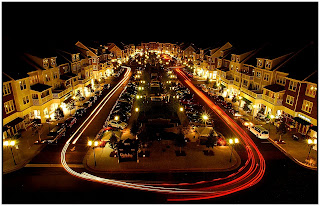CD covers
Above is the inlay, for the front cover and the description when the cd is opened up
Above is a piece which i personally don't think works particularly well due to the grainy foreground swimming image, in addition to the two photos are fighting for attention, with them both having bold imagery going on; however, i took the strong swing image and re-contextualised it below...
Using a more submissive photo merged with a bolder image works best, as this side view here is quite plain the two compliment each other very nicely. This is the back image of the cd case
Surrealism
Surrealism is an ongoing theme in this piece of work, that i hadn't previously intended on, however when artists explore any part of the mind and it's subconscious state we enter a realm where the impossible is possible.
Surrealism
ENCYCLOPEDIA. Philosophy. Surrealism is based on the belief in the superior reality of certain forms of previously neglected associations, in the omnipotence of the dream, in the disinterested play of thought. It tends to destroy definitively all other psychic mechanisms and to substitute itself for them in solving all the principle problems of life.
This is a painting by Rene Magritte is called The False Mirror (1935). During this time, it was considered, among surrealists, that the symbol of the closed eye represented a subversion of reality by drawing on interior states, therefor the image of the open eye, usually interpreted as an access between the person and the world - their soul, was a false vision of a mirror. Reality lay elsewhere. This is a very interesting concept to me, as i naturally, have always perceived the eye to represent the 'window to the soul', however it's refreshing to interpret it this way. According to surrealist artists automatism is a the state or mental process whereby something is done without consciousness like a reflex action or an instinct that you aren't conciously aware of performing. Surrealists have a "pure psychic automatism" The Dadaists talked about the removal of rationality and logic to align with new art processes developed and structured through chance and irrational logic. In the case of the surrealists, chance was still a valid external force, yet due to their interest in psychiatry was equated with the unconscious in all its manifestations. For example, an automatic drawing would be one that was the most pure thought of unconsciousness, an instinct, maybe an accident, maybe it's only when we tap into this we allow the unnecessary clouding information to be bypassed and in turn stroke pure genius.
Cinematography
Editing techniques i have been interested by are the contra zoom, also known as the vertigo effect, the push/pull effect, the jaws shot, dolly zoom which all refer to the same technique...
Where the camera runs of a track panning in or out while the lens zoom does the opposite, which creates an incredible illusion as if the background is coming towards the audience, yet the subject stays the same. This is a camera trick which has been used in many films, famously in Vertigo, Goodfellas, E.T, Matirx Reloaded, Lord of the Rings...
It is commonly used to represent 'falling away from oneself' or a feeling of unreality, it works by distorting perspective therefore distorting your perception of the situation.
However, in practise this shot was unattainable for this particular piece, nevertheless i shall be trying this out in the future when i have a suitable dolly device, e.g a skateboard/shopping trolly/roller blades that will smoothly produce this effect.
Long exposure photography works similarly to creating a time lapse effect in cinema. The longer the length of the exposure in photography, allows more light to enter the lens, giving a sense of movement, and life into the still image, which i think, is where the true beauty in photography lies.
Below is a similar video that i found while trying to find the previous technique, however it brings me onto the next effect i would like to talk about which is Stop Motion, where hundreds of photos are taken of an object moving, placed together in a film...
However, this is rather weird and bizarre... below is an extroidinary piece by PES called Western Spaghetti...
This animation won the Sundance Film Festival 2009, and is truly beautiful down to the sense of imagination and visualisation, it teaches you to think outside the box, and create new meanings to everyday objects, much as the Pop Artists did. The visual connection always astound and inspire me in stop motion animation, similarly to the video 'Food about you' shown below...
This video displays how green screen is used in films such as Sin City, based on a graphic novel, where the footage is desaturated then used chroma key to highlight distinct bright colours of their choice, this is then interjected with parts of animation, to depict the dystopian city that is ridden with crime.
At 2.55 this exact scene is played the outcome of effects...
Where the camera runs of a track panning in or out while the lens zoom does the opposite, which creates an incredible illusion as if the background is coming towards the audience, yet the subject stays the same. This is a camera trick which has been used in many films, famously in Vertigo, Goodfellas, E.T, Matirx Reloaded, Lord of the Rings...
It is commonly used to represent 'falling away from oneself' or a feeling of unreality, it works by distorting perspective therefore distorting your perception of the situation.
However, in practise this shot was unattainable for this particular piece, nevertheless i shall be trying this out in the future when i have a suitable dolly device, e.g a skateboard/shopping trolly/roller blades that will smoothly produce this effect.
Long exposure photography works similarly to creating a time lapse effect in cinema. The longer the length of the exposure in photography, allows more light to enter the lens, giving a sense of movement, and life into the still image, which i think, is where the true beauty in photography lies.
This image is quite beautiful, showing a street at night time, working especially well due to the symmetry. The main thing to keep in mind is keep the camera dead still, which i unfortunately couldn't do due to the absence of a tripod. Below i have found a video on youtube depicting the time lapse technique, i personally think the effect is mildly boring without a main character in, however at the same time it is beautiful to watch nature take it's course. This video is of London, Onntari, where 40cm of snow fell in 2 days...
Below is a similar video that i found while trying to find the previous technique, however it brings me onto the next effect i would like to talk about which is Stop Motion, where hundreds of photos are taken of an object moving, placed together in a film...
However, this is rather weird and bizarre... below is an extroidinary piece by PES called Western Spaghetti...
This animation won the Sundance Film Festival 2009, and is truly beautiful down to the sense of imagination and visualisation, it teaches you to think outside the box, and create new meanings to everyday objects, much as the Pop Artists did. The visual connection always astound and inspire me in stop motion animation, similarly to the video 'Food about you' shown below...
This video displays how green screen is used in films such as Sin City, based on a graphic novel, where the footage is desaturated then used chroma key to highlight distinct bright colours of their choice, this is then interjected with parts of animation, to depict the dystopian city that is ridden with crime.
At 2.55 this exact scene is played the outcome of effects...
Subscribe to:
Posts (Atom)











